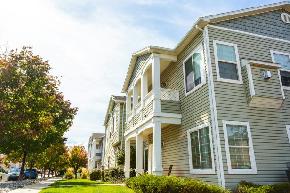Having rooftop solar tenants is more attractive than ever, as they offer a sustainable way to squeeze out more revenue from your building(s). Not only have the hard costs associated with developing solar projects been drastically reduced over the last decade, but the regulatory climate is prime with favorable incentives both nationally and regionally that make renewables a financially attractive market for property owners and developers alike. In fact, the federal government has extended the current ITC credit (aka the federal solar tax credit) until 2023, and more and more states are upping their goals of carbon neutrality.
Last year, my colleague at Partner Engineering and Science, Inc. wrote an article that did a nice job of explaining the overall advantages of a solar lease / solar savings arrangement and dispelled some of the myths around solar technology. If you do have a large flat rooftop in a state/city with a good solar incentive, you may have already been approached by a developer or solar provider to lease your rooftop and/or enter into a Power Purchase Agreement (PPA). As a developer, I wanted to take this opportunity to detail the step-by-step process that building and property owners can expect when considering a rooftop solar power system, as well as discuss questions they should ask.
Solar Energy Developers and First Steps
Solar energy developers are companies that originate solar projects, perform due diligence, procure all the permits to a construction-ready site, and usually directly own or sell the solar system to an owner; this can be done as a utility, Independent Power Producer (IPP), or investment fund. As developers, we often hear building owners say they had been approached about installing rooftop solar in the past, but it never worked out. To those, I encourage you to be open-minded as incentive programs change over time. What may not have worked 18 months ago could now work very well due to new legislation, more competitive pricing models, and the changing utility electricity rates. As with any industry, there are both good and subpar developers. It is important that you do your due diligence in checking the references and resumes of the principals of any organization offering to install solar on your property.
The Proposal. Once you are comfortable with the developer and you have received and accepted a clear proposal outlining the economic and non-economic benefits of the project, they should be asking for an informal site visit to examine your roof and your utility infrastructure. This is an important part of the due diligence process and should be performed very early on.
The Non-Binding Term Sheet. After the developer completes the preliminary due diligence, they should be preparing a non-binding term sheet (based on the proposal) outlining the terms of the transaction. There are several transaction models available, each tailored to specific market characteristics.
Solar Transaction Models
In some utility territories, the deal will most likely be a building roof lease (“Lease Model”) with lease terms that generally range 20 to 30 years with escalations. This type of lease offers a fairly straightforward arrangement with an assurance of predictable revenues. In other markets where electric energy rates are higher and offer attractive state incentives, the transaction may be a PPA. In this “PPA Model,” the owner/user pays the solar owner for electric energy delivered from the solar installation over the term of the agreement.
PPAs are beneficial for the property owner if either: (1) they consume electricity in excess of what the solar system would generate, such as a manufacturing facility, or (2) they pay for the electricity and CAM charges as part of the tenant leases. Depending on the electric energy rate (kWh) the owner/users are paying as well as the incentives offered, the owner could save considerably on electric energy costs. In this article, however, I will focus on the Lease Model.
(Note: 1 MW (megawatt) = 1,000 kW (kilowatts) = 1,000,000 watts. A 100,000 square foot rooftop will typically accommodate an approximately 1 MW project. In most cases, rent is paid according to the system’s size in MWs.)
Typical Next Steps
Due Diligence. At this point in the process, a non-binding term sheet is executed and the developer will commence with more costly due diligence; this typically includes structural and engineering studies as well as the preparation of applications to the respective jurisdictions. These activities are costs incurred directly by the developer. In my experience, most municipalities have favorable ordinances addressing rooftop solar with most installations given the go-ahead by simply applying for a building permit or through a site plan approval process.
The Interconnection Queue. One of the unique factors in a solar development is getting “interconnection” approval from the local utility. This is a complex process that typically lasts 6 to 7 months with specific procedures differing from utility to utility. Experienced developers will be able to do an early assessment of the utility infrastructure to determine the feasibility and expected cost of the project’s interconnection. Most utility companies have an “Interconnection Queue,” which is established on a first-come, first-served basis and require payment milestones that the developer must make to the respective utility in order to advance the interconnection process and fund the required utility equipment. Getting in the Queue is a very vital part of the process, as utility circuits (lines) can only handle a certain amount of capacity (projects).
If the capacity of a line gets maxed out, it could likely result in utility line upgrades that cause an incremental project cost and potentially make your project unfeasible. Although a developer will not know the exact costs until the utility performs its study and analysis, these instances may be minimized through the developer’s working history with the utility and prior experience with interconnection planning. Ask the developer to provide proof that your project has been applied to the utility and is included in the Interconnection Queue. Be mindful of developers who attempt to lock up land/buildings and do not move judiciously to submit the utility interconnection application. Incorporating this term in the lease document will ensure your project is not just sitting idle.
The Rooftop Lease. A few weeks after a Term Sheet is executed, the developer should send you an editable version of a rooftop lease template. The majority of the lease agreement will contain typical boilerplate language that is found in most leases. Have your attorney review the document. A few caveats: (1) Lease payments typically commence as commercial operation begins. (2) It is not uncommon for the developer to include a “due diligence” rent or option period fee. Keep in mind that these systems’ permits are expensive to obtain, and there is substantial cost risk the developer is assuming. However, you should not expect a large sum of option and/or due diligence rental fees. (3) Some clauses in the lease are typically not negotiable. They include: (A) Assignment: The developer needs free reign to assign the system to a third party, primarily for financing purposes. (B) Term: For a system to be financeable and have a realistic payback period, terms are usually a minimum of 20 years. C) Termination: The lessee is typically provided with broad default cure provisions, including step-in rights by the financier. However, you can negotiate an early termination buyout, typically after the first five years.
A word to the wise: Solar tenants are not your typical “building” tenants. Solar tenants have long-term leases and, since the investment in the solar system typically exceeds seven figures, there needs to be more security for all involved. Most developers will not advance the project (spend additional development funds) until a lease agreement is signed. In addition, time is of the essence; many deals fail because an attorney took too long and tried to negotiate every minutia, which may cause the project to no longer qualify for certain incentives that make the project feasible.
Construction Tips. Once a project’s due diligence is completed, all permits are obtained from the municipality, and the developer receives an Interconnection Service Agreement (ISA) from the utility, then construction of the project is ready to commence. Most developers will sell the project at this stage to an IPP or investment fund, who finances the remainder of the construction project. This step may take up to 60 days to complete, which is standard in the industry.
As the project approaches the construction stage, the building owner will want to know the details of the project operations and maintenance arrangement as well as who the vendor is. That way, they will know who to contact if there is an issue. You will also want to have evidence that the roof warranty is in place and that the roof is properly inspected before and after construction. The best practice is for the developer to work with your roofer and roof manufacturer up front. If your roof is more than 10 years old, there is a good chance the roof will need to be replaced. This can be folded into the project scope at little to no cost to you. However, the cost of replacement will reduce your annual lease payments.
In conclusion, leasing your unused roof space for additional income will increase your NOI and your property’s overall value. Nearly every community, major corporation, and state has “Going Green” initiatives. In addition to having a very stable long-term rental stream for unused real estate, you will be on the cutting edge of the energy revolution. Working with an experienced developer with good references and a strong track record is important and can be the difference between a successful project and one riddled with issues.

















 Copyright © 2024 ALM Global, LLC. All Rights Reserved.
Copyright © 2024 ALM Global, LLC. All Rights Reserved.